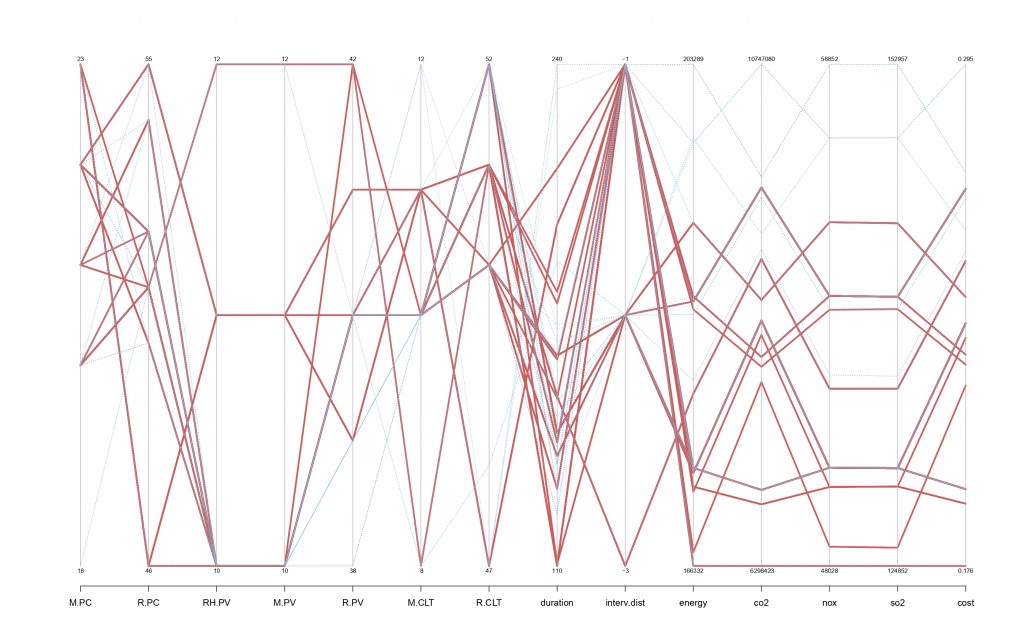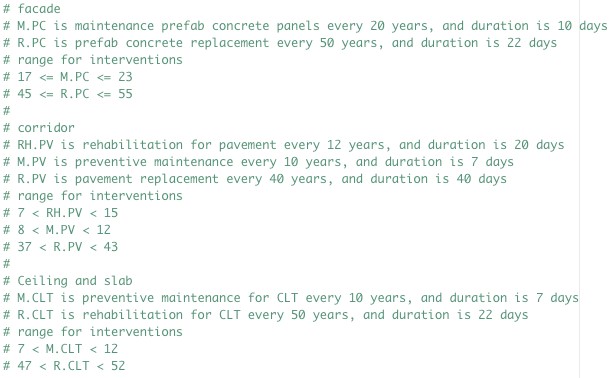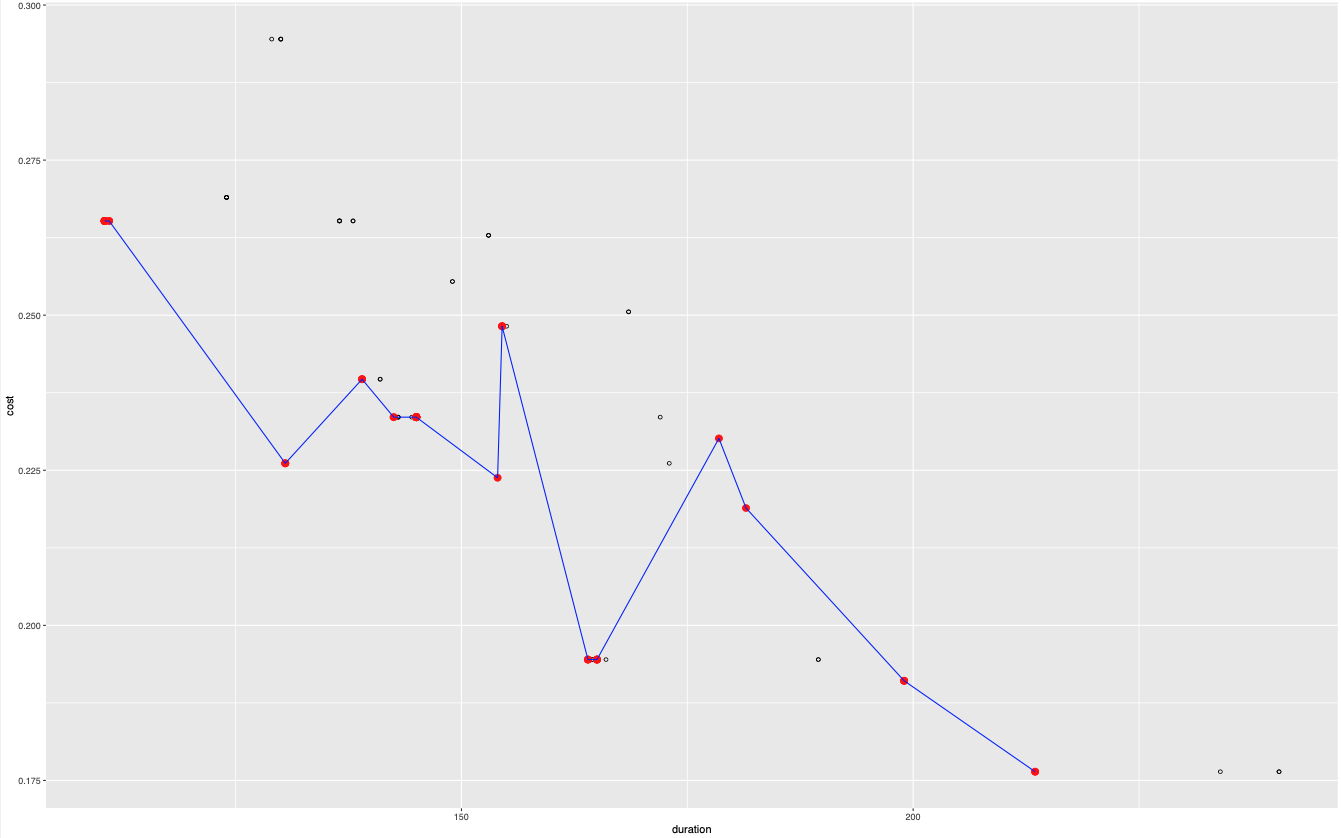The approach of using Multi Objective Optimization is important in civil systems, where decision-makers often face trade-offs between economic, environmental, and social objectives. Especially when the goal is to find solutions that balance conflicting objectives – like dependencies in subsystems – in complex systems. With the method it is possible to identify solutions that offer a good balance between these objectives and to make informed decisions about how to allocate resources and design interventions that achieve desired outcomes [3]. To analyse different maintenance planning strategies for design option 4 some new assumptions are made. In the below figure, an excerpt of the R script shows ranges for interventions of the subsystems. The goal is to find the optimal solution with all parameters calculated in this study, like the minimum distance between two consecutive interventions, the total duration of interventions as well as the lowest possible environmental impacts of the LCA. All the parameters are part of the function calculated in R.
Figure 11: Range of durations for maintenance of subsystems.
Using Genetic Algorithm (GA) optimization to create a population of candidate solutions, which evolves over time through selection, reproduction, and mutation, also helps in the decision-making process [4]. In the population, the GA finds the best solution according to minimizing cost and maximizing efficiency. Combined with the pareto frontier the optimal solutions are highlighted in Figure 12, which shows the dependency of duration and cost. There are several good options, which have advantages in low duration or low cost.
Figure 12: Range of durations for maintenance of subsystems.
To look at the impact of the input parameters according to the performance criteria, the following results are given out of the calculation in R. As one can see the red lines mark the pareto optimal solutions, the blue lines the non-optimal solutions. The red ones can’t be approved without degrading the other objectives. It is remarkable that the environmental impacts don’t show big changes, because the most emissions arise during the construction phase. To make the decision a multi criteria decision making tool like TOPSIS or AHP is recommended.
 Figure 13: multi objective optimization results
Figure 13: multi objective optimization results
References:
[3] Gunantara, N. Qingsong, A. A review of multi-objective optimization: Methods and its applications. 2018.
[4] Mishra, S. Sahoo, S. Das, M. Genetic Algorithm: An Efficient Tool for Global Optimization. 2017.
Other sub-pages:
- Individual Systems
- Integrated Context
- Integrated Maintenance Planning
- Integrated Life Cycle & Inventory Analysis
Download the R-Script here:

